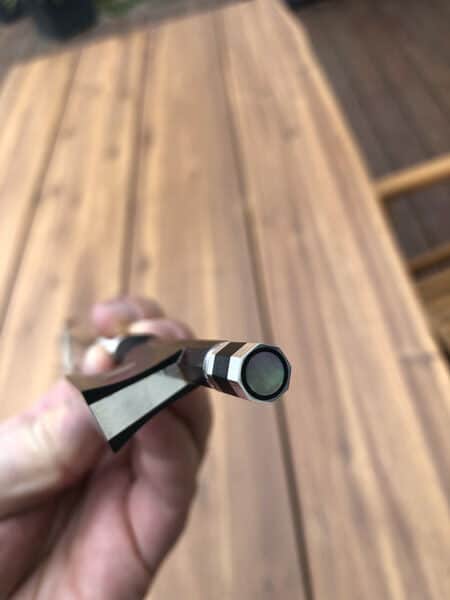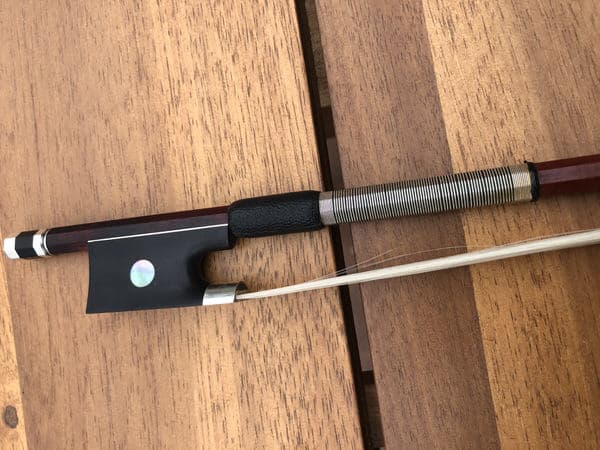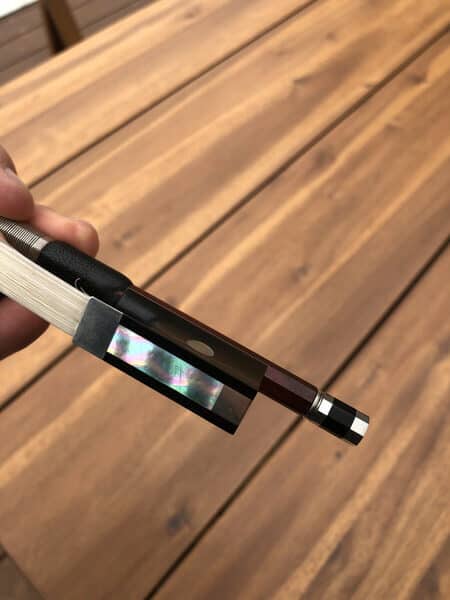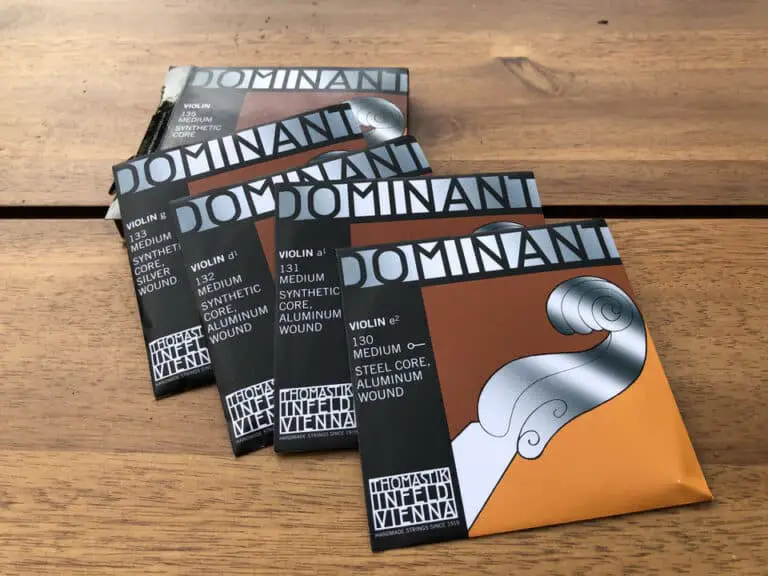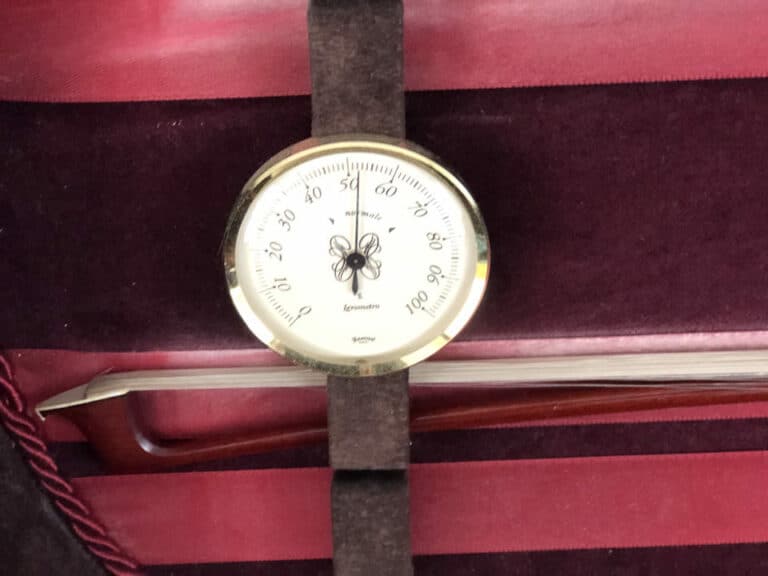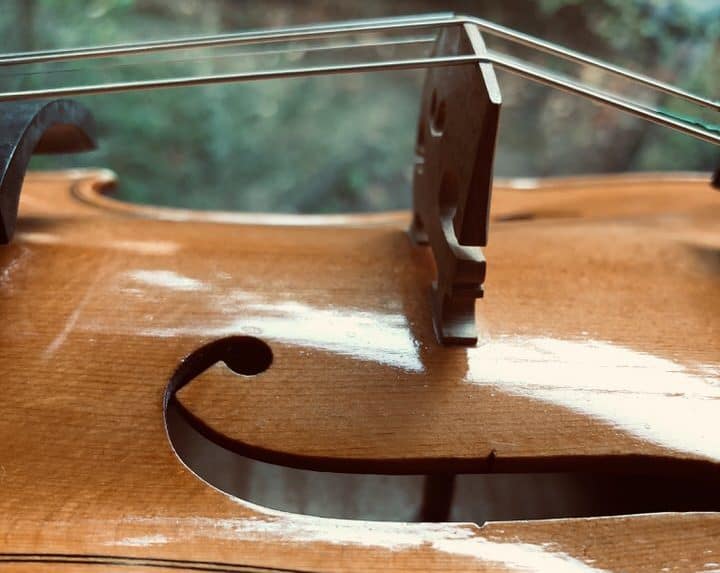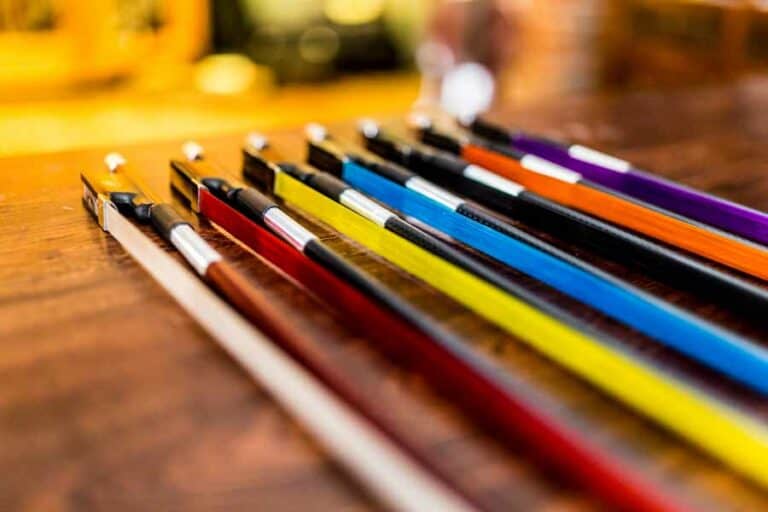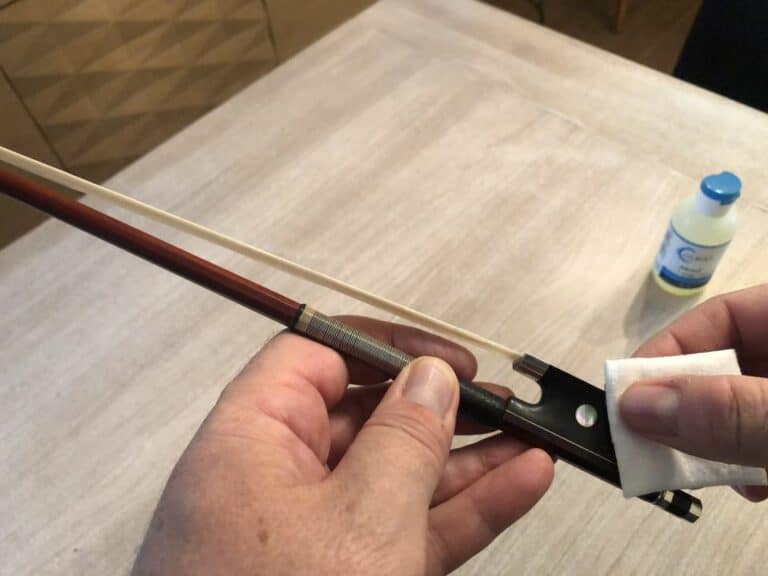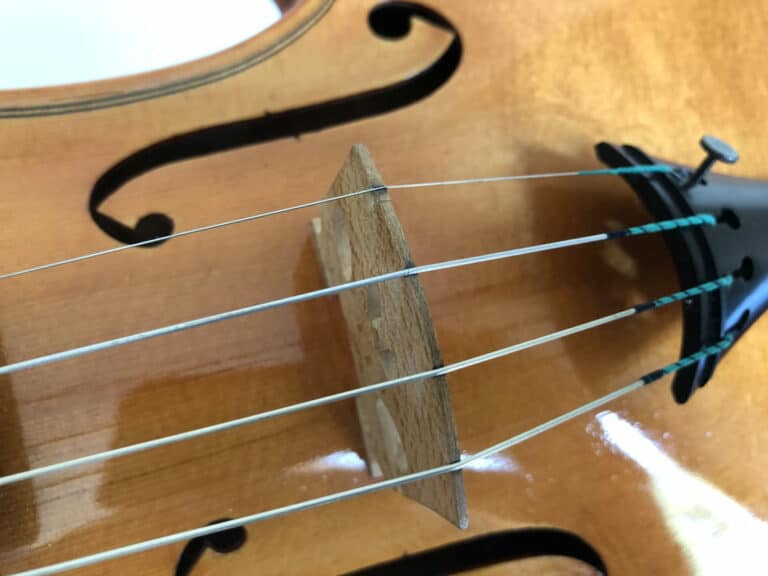How to Choose a Violin Bow: What to Look for
There is nothing more personal to a violinist than his or her bow, yet it is often overlooked. It is wrongly considered as an accessory to a violin, a bit like a tailpiece or a chinrest. I can’t stress enough how important a bow is to a violinist. When I started, like many beginners, I focused on the violin only and the left hand, without understanding how the bow and the right-hand technique was crucial as well. Maybe more important, though it can be debated. My mentor, Leonid Kogan’s student, was obsessed with bows and right-hand technique. I have spent a lot of time trying bows since then, and I will try to share all the important things to check when trying to buy a bow.
How to choose a violin bow? We have to choose a wood: Pernambuco and Brazilwood are the best, then we need to choose a weight, heavy or light bow. Then, we need to check if it is straight and how curved it is. We need to try it for sound, stability, and elasticity. Lastly, we can check its condition, beauty and accessories.
There isn’t a single answer when it comes to choosing a bow. My mentor has a dozen of them and chooses the one he wants to play according to the repertoire, the mood, the violin… So it is really important to know what to try and what to look for when you are in the market for a bow.
1. The weight of a bow and its balance are important
The average weight of a violin bow is around 63 grams. I know violinists that can guess the weight of the bow just by holding it… The right hand becomes so sensitive that it feels the bow and its weight and adapts its technique to it.
- A heavier than average bow is usually a bit more stable which is a good thing, especially for détaché and chords. The type of sound might be better as well. Of course, it needs to be tested and validated by our ear only. A heavy bow can be an inconvenience for violinists in orchestras for long rehearsals and never-ending concerts,
- Medium to light bows are of course easier on the arm for long periods of playing. The sound might be thinner. Usually, light bows are better for all the bow strokes that require elasticity and rebound: saltellato, spicatto, staccato… This can be far better to play virtuosic pieces with such bows. On the other hand, stability can be an issue for down-to-the-string pieces like Bach.
- Ultralight bows or carbon fiber bows. Some orchestra violinists like these bows because they are a relief to the right arm for their long rehearsals. The type of sound itself is maybe less important in a big orchestra than ease of play and comfort in the long term. I have tried ultralight bows myself and didn’t like them. I didn’t like their lack of stability, thin sound, and erratic rebound temperament. But I haven’t tried all of them: you should try out for yourself and make your own opinion about them.
- Lastly, the balance itself or the lack thereof is important. You can support the bow with one finger in the middle to find out where the center of gravity is. It should be closer to the frog, of course. Anyway, the tip and the frog should be balanced, you can check that by playing chords and arpeggios. The center of gravity of the bow is important when you want to get a natural rebound of the bow.
2. The type of wood defines the sound and temperament of a bow
Pernambuco
The best wood for violin bows is without doubt Pernambuco. It provides a great solidity yet elasticity to the bow thus allowing unparalleled playability. Pernambuco is hard and dense. Bow makers appreciate crafting a bow out of it.
This wood is of course expensive, but if you’re serious about violin playing, you should be aiming for a Pernambuco bow.
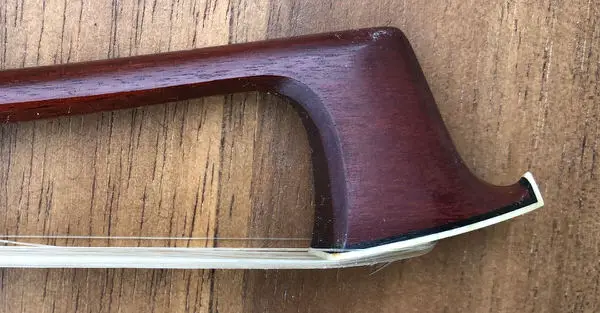
Brazilwood
For beginner to intermediate violinists, the most common wood used is Brazilwood. That wood is acceptable, not only for sound but also for elasticity and stability. I have myself started with a bow made of Brazilwood and I still have it for when I play in places where I risk to damage it.
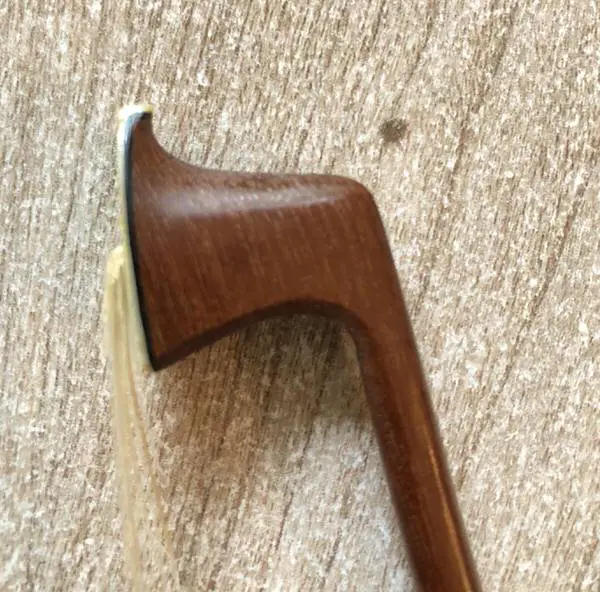
Carbon fiber and composite
As I have written above, carbon fiber or composite material are really different. I myself don’t like the sound they make, nor do I appreciate the kind of bounce they produce. This is my feeling about them, you should definitely check for yourself. They might have improved since I last tried which was a couple of years ago.
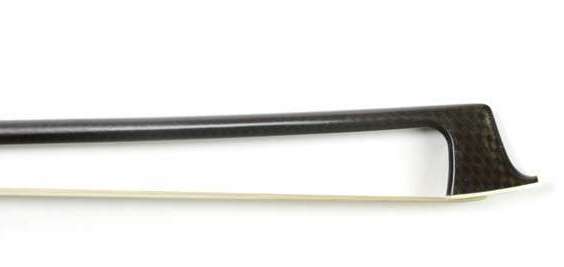
3. Bows have different types of sound
It is difficult to translate it in words, or even with a microphone and speakers. Nothing is better than trying a bow to find out the type of sound it offers and whether it plays well with its violin counterpart. When I first began to try many bows, I was amazed at how different the sound can be between different bows on the same violin. It seems counter-intuitive at first because we tend to think that the violin makes the sound. But in reality, it is a whole: the violin plus the bow make the sound. So it is by trying many bows that you will find out how important bows are in the sound-making process. It is not just a question of comfort but also, and above all, of nature of sound.
To find out, try to play slow, slow pieces with long bow strokes, open strings, each string up the fingerboard.
Don’t forget to listen for yourself, the violinist, but also with the help of a friend, at a couple of feet. If you get the chance to have a friend help you listen to the sound of your violin plus bow and to try them out in a large room, it is important as well to listen at ten to twenty feet as well because the type of sound and the type of harmonics are different at that distance.
4. The accessories: some bows are more beautiful than others
Gold/Silver, tortoiseshell, ebony.
The visual aspect of a bow is important as well but should be last in your list of qualities to check. It is important because, if you are like me, you can fall in love with a bow. But the sound is always first and the visual aspect of the bow shouldn’t influence your choice, even if the temptation is great.
- The head, or tip of the bow. Only specialists, bow lovers, makers, bow amateurs can recognize different bow tips, their history, the school of bow making that lead to them. For example, two great bow makers have typical bow heads: François Tourte and Dominique Pecatte. The tip itself is more of a maker’s visual signature than an important part of the sound.
- The frog: Gold, silver, or aluminum. Again, there is no difference in sound depending on the metal itself. The type of metal indicates what the maker thought about the stick he or she has just crafted. If he or she thought the wood was exceptional and the sound and temperament of the bow were great it used gold for the frog. If it was slightly less exceptional but still great, he or she uses silver. It is how we should understand gold and silver mountings on bows. But it adds great beauty and aesthetics to a bow.
- Decoration, inlays of tortoiseshell: the grip, the screw can be richly embellished with polished shell. One of my bows has a moon inlay in the screw. The beauty of the ebony of the frog as well can be eye-catching. It is up to you: do not choose a bow for these reasons, but they are a joy to watch every day. This beauty is a testament to the quality of the bow itself, which should naturally translate sound wise.
5. Directions of the stick: bows aren’t straight
Straight or a bit curved if the bow is played leaning towards the fingerboard
Curved to be a bit more nervous and temperamental
When you choose a bow, carefully look a the stick. If you look at it from the side, it should be curved enough to fight well the tension of the hair. This gives the nature of the rebound. A bow maker can heat the stick to change that curve if needed to give the bow more character. I like bows that are nervous and temperamental. They can be enhanced up to some point. But if they are not born that way it is not always possible to rearrange them to give them those qualities.
If you look at the stick from the frog till the tip, you should see a straight line. If the stick is not perfectly straight, the curve should be to the right. Because, when we play, the bow often sits at an angle towards the fingerboard. That kind of curvature resists this angle and brings stability.
6. Stability of the bow
If the bow is well balanced and straight, see above, then it should be stable. That is to say, the stick should have a regular motion above the hair and not shake or tremble. The round motion of executing a chord should be facilitated.
A stable bow will ease your technique: this is important. How to try that?
- Play long and fast détachés,
- Play chords,
- Play chords at the frog.
The bow I prefer to play Bach with offers me the kind of stability I compare with a train on a rail.
Try that thoroughly. A lighter and nervous bow might lack there. A great classic bow can shine in several different departments, but usually, a light bow with too much temperament lacks stability.
If you are on a budget, it is usually a trade-off.
7. A good rebound is a great quality for a bow
Only the best bows have a gorgeous sound and a good bounce.
If you like playing percussion and rhythms with your bow, a good rebound is essential. Modern pieces love that aspect of the play. Classic virtuoso concertos and caprices as well.
Types of bows
If you favor your right-hand technique, a nervous bow is a must.
My mentor used to try as many bows as he could, invariably playing saltellato, flying stacatto, jeté, ricochet… If the bow was nervous enough, he was filled with joy. Too temperamental, and he used to say the bow wasn’t for Bach. A bow’s nervousness has to be mastered.
Rebound: U type VS V type
He classified the rebounds into two types: U type and V type. It is rather self-explanatory: a U rebound is softer and the air spends more time in contact with the string. A V rebound is more agile, like a ball with a lot more air in it. There is less contact with the string, the sound risks to be thinner.
A V type bow is definitely better for Paganini first Caprice, a U type bow for Mozart No 5.
Natural ricochet
That’s the number of rebound of the bow on the string when you just throw it (jeté). It gives a great hint about the bow’s nervousness. Plus, the center of gravity here plays a great role. If the maker is good, he or she has crafted a bow and took away wood in a balanced way between the tip and the frog.
If the bow is not well balanced, the place where you could perform saltellato or spicatto will be awkward, too much towards the tip for example. You just won’t be able to play these strokes. So it is crucial if you want to play a varied repertoire that your bow be versatile.
Great bows are always all-rounders with magnificent sound and impressive agility. You don’t have to choose, you get the best of every world.
But these are rare.
I usually play with a Gold Hans Karl Schmidt which is a marvel for agility as well as sound-wise.
If you play baroque music, for example, you might want to choose a bow from that time and get the feeling of what violinists back then used to play with. And thus to sound like.
To play more modern music, a good all-around bow is preferable because difficult bow strokes need to be performed no matter how. You might want to trade that slightly better sound to be able to play a good spiccatto.
As for rock and blues, a rugged bow that can play anywhere might be a better choice as virtuosic bow strokes and a perfect sound are traded in exchange for electricity and energy.
I hope I could convey the love I developed for bows, that my mentor gave me over the years. He never departs from at least four bows, a bare minimum for him to just consider playing a concert. So choosing a bow is something you will end up doing every day.

